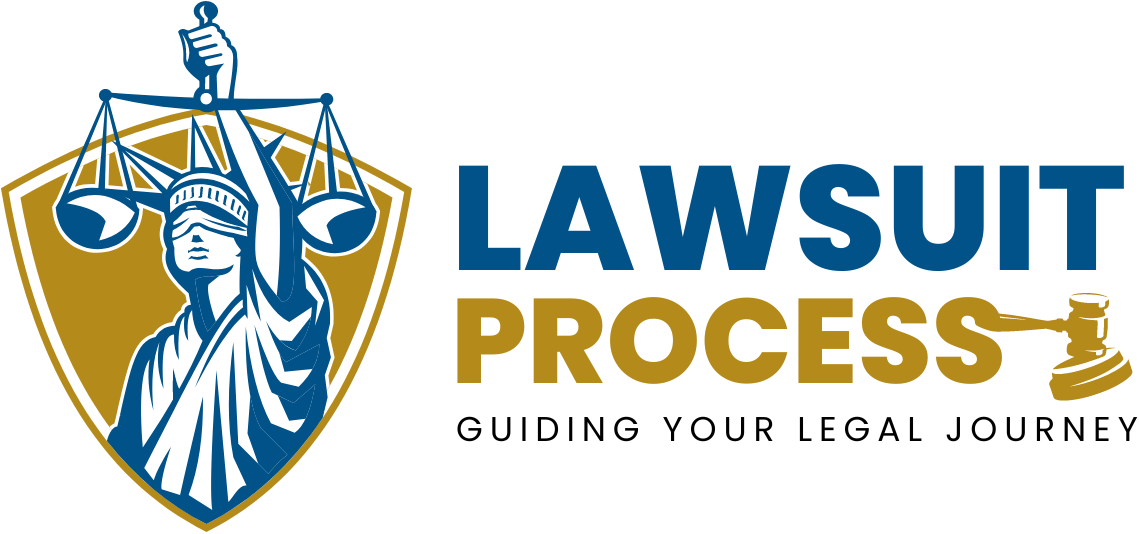If you’ve been injured in New York due to someone else’s negligence, filing a personal injury lawsuit can help you recover damages. However, the legal process can feel overwhelming. To ease the burden, this guide breaks down step-by-step, how to file a personal injury lawsuit in New York so you can navigate the personal injury lawsuit process with confidence.
Table of Contents
- Understand What Qualifies as a Personal Injury
- Seek Immediate Medical Attention
- Consult a Personal Injury Attorney
- Investigate and Gather Evidence
- File a Claim with the At-Fault Party’s Insurance
- Know the Statute of Limitations in New York
- File the Complaint in Civil Court
- Pre-Trial Discovery and Motions
- Settlement Negotiations Continue
- Trial and Judgment
- Collecting the Judgment
- Key Takeaway
- Frequently Asked Questions (FAQs)
1. Understand What Qualifies as a Personal Injury
Personal injury cases cover harm caused by another party’s negligence or intentional actions. Common examples include:
- Car accidents
- Slip and fall incidents
- Medical malpractice
- Workplace injuries
- Defective products
- Dog bites
If you sustained physical, emotional, or financial harm due to any of these, you may have grounds for a lawsuit.
2. Seek Immediate Medical Attention
After any injury, your first priority should be your health. Seek medical care right away. This not only ensures proper treatment, but also creates documentation—an essential part of your legal case.
3. Consult a Personal Injury Attorney
While you can technically file a lawsuit on your own, New York personal injury laws are complex. An experienced attorney can:
- Assess whether you have a valid claim
- Calculate fair compensation
- Handle legal filings and court proceedings
- Negotiate settlements
Most personal injury lawyers offer free consultations and work on a contingency basis. This means you pay nothing unless they win your case.
4. Investigate and Gather Evidence
Your lawyer will start investigating your claim. But if you haven’t hired one yet, you can begin collecting:
- Medical records and bills
- Photos or videos of the accident scene
- Witness statements
- Police or incident reports
- Proof of lost wages and expenses
Strong evidence builds a stronger case.
5. File a Claim with the At-Fault Party’s Insurance
Before going to court, your attorney will usually file a claim with the responsible party’s insurance company. In many cases, this leads to a settlement without filing a lawsuit.
6. Know the Statute of Limitations in New York
In New York, you typically have three years from the date of the injury to file a personal injury lawsuit. However, there are exceptions:
- Medical malpractice: 2 years and 6 months
- Claims against government entities: as little as 90 days to file a notice of claim
Missing these deadlines could mean losing your right to sue.
7. File the Complaint in Civil Court
If settlement negotiations don’t succeed, your attorney will file a legal document called a “complaint” in the appropriate New York court. This document outlines your claim, who you’re suing, and the damages you seek.
You’ll also need to officially serve the defendant with the complaint and a summons to appear in court.
8. Pre-Trial Discovery and Motions
Once the lawsuit is underway, both parties enter discovery. This is when each side gathers more evidence, answers written questions (interrogatories), and gives depositions.
Attorneys may also file motions to dismiss the case or resolve parts of it before trial.
9. Settlement Negotiations Continue
Even after filing suit, both sides may continue negotiating. Settlements can happen at any stage—before trial or even during it.
10. Trial and Judgment
If no agreement is reached, your case will go to trial. A judge or jury will decide who is at fault and how much compensation you should receive. Trials can be lengthy and uncertain, but your attorney will guide you throughout the process.
11. Collecting the Judgment
If you win, the court awards a judgment in your favor. However, collecting that money can take additional legal steps if the defendant refuses to pay. Your attorney can assist with enforcement actions like wage garnishment or liens.
Key Takeaway
Filing a personal injury lawsuit in New York involves more than just going to court. It’s a multi-step process that starts with medical care and ends—hopefully—with fair compensation. With the right guidance and legal support, you can focus on recovery while your attorney handles the rest.
- Personal injury includes car accidents, slips, malpractice, and more.
- Seek immediate medical treatment and document everything.
- Consult a personal injury attorney early for legal guidance.
- Gather strong evidence to support your case.
- File a claim with the at-fault party’s insurance before suing.
- Understand the statute of limitations—typically 3 years in NY.
- File a formal complaint in court if settlement fails.
- Engage in discovery and respond to legal motions.
- Be prepared for trial, but know that many cases settle.
- Winning a judgment is only part of the battle—collection may follow.
Frequently Asked Questions (FAQs)
1. How long do I have to file a personal injury lawsuit in New York?
In most cases, you have three years from the date of the injury to file a personal injury lawsuit in New York. However, this timeframe can be shorter for specific types of cases, like medical malpractice or claims against government entities. It’s crucial to act quickly to protect your rights.
2. Do I need a lawyer to file a personal injury lawsuit in New York?
While it’s legally possible to file a lawsuit without an attorney, having one is highly recommended. Personal injury laws are complex, and insurance companies often have experienced legal teams. A lawyer helps build a strong case, negotiates settlements, and represents you in court if necessary.
3. How much does it cost to file a personal injury lawsuit in New York?
Most personal injury attorneys in New York work on a contingency fee basis, meaning you don’t pay upfront. They take a percentage of your final settlement or court award, usually around 33%. Filing fees and court costs may apply, but these are often advanced by your attorney and reimbursed later.
4. What is the average settlement for a personal injury case in New York?
The average settlement varies widely depending on the severity of injuries, lost wages, medical expenses, and pain and suffering. Minor injury cases might settle for a few thousand dollars, while serious injuries can result in six- or even seven-figure settlements.
5. What if I was partially at fault for the accident?
New York follows a “pure comparative negligence” rule. This means you can still recover damages even if you were partially at fault. However, your compensation will be reduced by your percentage of fault. For example, if you’re found 20% responsible, your award will be reduced by 20%.
6. How long does a personal injury lawsuit take in New York?
Every case is different. Some settle in a few months, while others—especially those that go to trial—can take several years. Factors include the complexity of the case, the willingness of both parties to settle, and court scheduling.
7. What types of damages can I recover in a personal injury lawsuit?
Victims may be entitled to recover both economic and non-economic damages, including:
- Medical expenses (past and future)
- Lost wages and loss of earning capacity
- Pain and suffering
- Emotional distress
- Property damage
- Loss of enjoyment of life
8. Can I sue the city or state of New York for my injury?
Yes, but special rules apply. If a government agency is involved, you must file a Notice of Claim within 90 days of the incident. The time limits and procedures are strict, so contact an attorney immediately if your injury involves a public entity.
9. Will my personal injury case go to trial?
Most personal injury cases settle out of court. Trials happen only if both sides cannot agree on a fair settlement. Your attorney will advise you if going to trial is the best option based on the specifics of your case.
10. What should I do immediately after an accident in New York?
Right after an accident, take the following steps if you’re able:
- Seek medical attention
- Call the police and file a report
- Document the scene with photos or videos
- Collect names and contact info of witnesses
- Avoid admitting fault
- Contact a personal injury attorney as soon as possible
11. Can I file a personal injury lawsuit for emotional distress?
Yes, emotional distress is a recognized non-economic damage in New York personal injury cases. It often accompanies physical injuries, but in some cases, victims can claim emotional distress even without a physical injury—such as in cases of extreme negligence or intentional harm.
12. How is pain and suffering calculated in New York?
There’s no fixed formula, but courts and insurance companies consider factors like the severity of injuries, recovery time, medical treatments, impact on daily life, and emotional trauma. Attorneys often use multipliers or per diem methods to estimate these damages.










